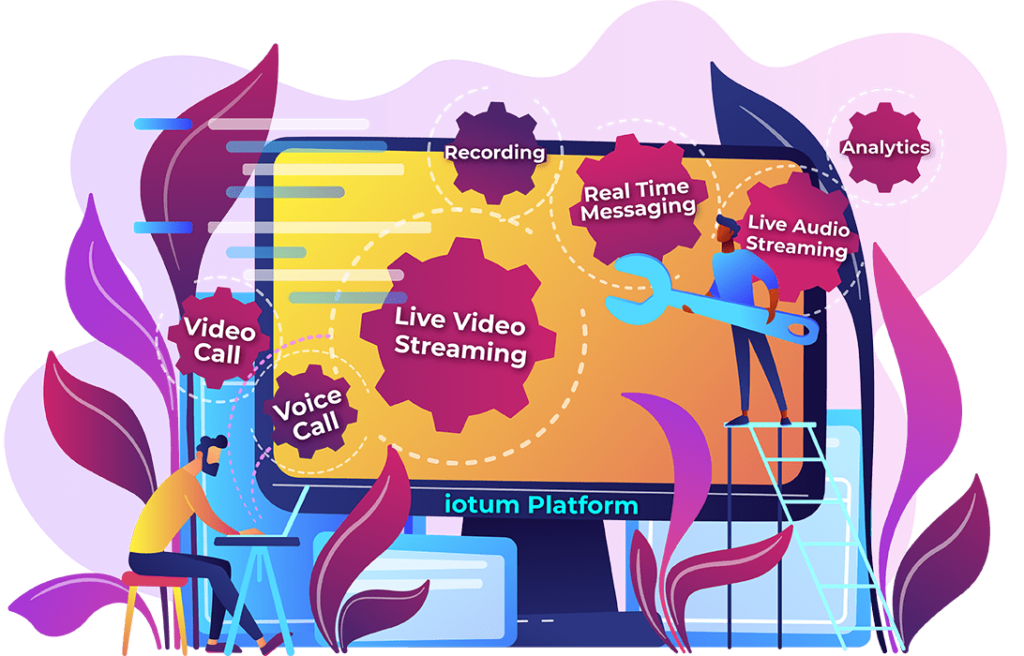 Since the pandemic hit earlier in 2020, every industry has had to adapt to take on a more digital-centric approach to business. Moving forward, sales forces, no matter the product, have transformed into virtual sales forces by means of moving business online.
Since the pandemic hit earlier in 2020, every industry has had to adapt to take on a more digital-centric approach to business. Moving forward, sales forces, no matter the product, have transformed into virtual sales forces by means of moving business online.
Virtual meetings and presentations give salespeople the avenue to present and deliver their proposition in a virtual setting. Selling your product, pitching ideas, generating consumer awareness, sealing the deal, and building working relationships brick by brick – all of these aspects of the job have had to become virtual, reinventing how sales reps interact with clients and prospects.
While even the most senior salespeople might struggle to sell in a virtual setting, there are still surefire methods and techniques to garner interest or lock down a contract.
If you’re looking to:
Connect with your audience more meaningfully
Improve back-end communication with your colleagues
Boost your online presence
Ramp up sales
And more…
Consider how virtual sales team meetings underpin the success of your business (quite literally) behind the screen.
Just like with any transition, there’s a learning curve. Let’s address some of the common obstacles salespeople face when having to shift from an in-person to an online environment:
Participants Aren’t Present
Sure, participants are logged in and appear active, but when it comes to a conference call or video, are they really present? It’s easy to come across as engaged in a virtual meeting. All a participant has to do is sit in front of a device, log in, and let the multi-tasking begin!
Multi-tasking is when participants are “here” but not really. They are checking email, on their phone, playing an online game, texting, etc. It’s easy to get away with these things behind a screen.
Lack Of Interaction
As a result of multitasking, participants become less engaged. Tuning out and being distracted leads to little or no interaction – arguably, a key aspect of selling. If there is a lack of participants who aren’t asking questions or answering prompts in meaningful ways, it’s easy for your pitch to fall short or for your message to flop.
Not being able to reach out and connect, especially when participants are preoccupied puts a block between you, the sender of the message, and them, the receiver of the messaging.
More Challenging To Read The Room
In a face-to-face selling environment, it’s not as much of a challenge discerning someone’s body language and facial expressions. It’s really quite obvious. But when it comes to watching how participants interpret your pitch or understanding their tone when they answer a question online, it becomes a little more labor-intensive to read the room. Tailoring your messaging and adjusting your delivery is harder to pull off on the fly.
Not Making Eye Contact
One of the most surefire ways to lead an audience is to look them in the eye and make eye contact. When we connect on such a level, it makes for a more direct line of communication and trust.
While these obstacles may feel discouraging at first, there are hard-hitting tactics and strategies to help back up your messaging and connect you with your audience in a virtual sales meeting.
(alt-tag: Downview of desktop working station with office supplies, video conferencing with a woman on desktop computer)
Implement the following techniques to make every presentation hit home and drive sales while delivering an online presentation or pitch:
Send The Top 10% Of Your Message
 People have a lot to remember on a daily basis, therefore, expect your audience to forget the majority of what you’re saying. Right off the bat, they will only be able to recall roughly 10% of your messaging, and what little they do remember is most likely to be something random or not closely related to your unique selling proposition.
People have a lot to remember on a daily basis, therefore, expect your audience to forget the majority of what you’re saying. Right off the bat, they will only be able to recall roughly 10% of your messaging, and what little they do remember is most likely to be something random or not closely related to your unique selling proposition.
Design your presentation around the most important part of your messaging – that 10% messaging nugget. Determine the core message you want clients to remember and eventually act on (especially if you’re trying to drive awareness or close a deal) and then work backward.
When creating this 10% message, for it to land, make it so that it’s “sticky,” targeted, simple and actionable. If the other 90% of your delivery falls to the wayside, the most important and valuable info will have left enough of an impression to be recalled later on.
Command Attention
Contrary to popular opinion, it’s not that people have shorter attention spans, it’s that they have a higher tolerance for stimulation. To grab someone’s attention, it requires keeping them hooked. In a remote selling scenario, it’s a challenge to pique interest when there is a constant barrage of distraction at home or enticing things to look at on the internet.
Implement well-crafted visuals and design, and interactive elements in your presentation. Take into account colors, imagery, pace, animation, and video to hone in on the most important aspects in your slides or email marketing. A little thoughtful visual play goes a long way.
Appeal To The “Lizard Brain”
Colloquially referred to as the lizard brain, the brainstem is the oldest part of the brain, responsible for calculating threats and operating on instincts. It’s also engaged via visual stimulation and storytelling. Wake up this old part of the brain by shaking up your potential client’s attention:
With a sense of urgency.
Why do they need this change? And why do they need it now?
With contrast.
What do they need that they aren’t getting from where they currently are? To make a decision that affects this part of the brain, consider visually showing contrast with “before” and “after” stories; visual tools like graphs, and images that make abstract concepts more tangible.
Blow Open The Conversation
Selling remotely doesn’t have to be a one-way street. Instead, invite prospects into the equation by stoking the fires of discussion. First, determine a piece of data that pertains to your prospect’s business on a macro level. Start big, then carve away at that nugget of data to draw an insight that fits into the problem or context of your prospect’s current situation. At that point, you should be able to derive a thoughtful question to spark dialogue.
Curate And Control Interaction
During the course of a virtual sales meeting, there are multiple ways to work up group dynamics. Simply asking everyone to turn on the camera instantly drums up attention and wakes up the lizard brain.
Make use of an online whiteboard to draw out concepts and invite participants to draw out their own or add to another. Create healthy tension by leaving your slides for a moment to bring attention to another onscreen element.
Try designing a simple poll that asks the audience for their input which also gives you real-time intel.
Leave Breadcrumbs
 Drive home your story or universal insight by prompting participants to take notes. In your sale, highlight certain discussion points that you want potential clients to take away and encourage them to write down or record these specific notes.
Drive home your story or universal insight by prompting participants to take notes. In your sale, highlight certain discussion points that you want potential clients to take away and encourage them to write down or record these specific notes.
Deliver very easy, short, and succinct messaging that captures big ideas in quotes, anecdotes, personal stories, testimonials, and more – anything that is bite-sized and easy to remember.
With these simple adjustments, you can manage how you create and send your messaging in a digital environment. Not only will these work to shape the outcome of your sell, let these techniques stand as the structure of how you form a successful virtual sales meeting that leads to conversions.
So what are the top 3 tips for hosting a successful virtual sales team meeting? First, let’s discuss what success looks like in an online setting:
- Participants Are Engaged
To keep participants present and engaged, start at the beginning with a rock-solid first impression. Let them know their time is valuable by taking the waiting feeling out of “waiting around.” From the get-go, when participants are logging in, make them feel welcome with Custom Hold Music that suggests they’re in the right place. Next, try Text Chat as a way to start a low-pressure conversation by asking a question to the group. If you want to ramp it up, invite everyone to turn on their cameras. Ask group questions and get the meeting off to a roaring start. - Supported Messaging
Stir up more interaction and excitement by showing prospects a solution, taking them through a problem, or guiding them on a tour using Screen Sharing. When everyone is on the same page, it’s easier to make progress through difficult-to-explain IT scenarios, product demonstrations, and sales presentations. You’re in control of what your audience is seeing and can therefore take questions and answer on the spot, pull up references and sources, add in additional support, make recordings, play videos on command and so much more – all directly on your desktop. - Physical And Emotional Presence
It’s a challenge to gauge the emotional temperature of the room when you can’t actually see how people are reacting. Conference calls are beneficial when you need to follow up or gain clarity, but if you’re trying to close a deal or sell your product or service, seeing participants and letting participants see you forms a bond of trust. A face to the name reminds everyone there is a real human being. Be able to read body language, and facial expressions by simply turning on your camera and using video conferencing capabilities to bring you and your audience closer. If you want more content or want to email the meeting, hit record and send the meeting out after it’s done. Let the AI-bot do all the transcribing and auto-tagging for you, so no information or data gets missed. - Group Energy Is Positive
When eye contact is made possible online, experience how meeting in a virtual setting feels like the next best thing to being in person. It’s easy to see who is talking and it feels like an actual meeting when you can see who comes in and who leaves the call. With Gallery and Speaker View, everyone in attendance is made visible as thumbnails, in real-time, in a grid-like formation. Gallery View places all attendees on the same screen for instant visibility of everyone on the video call. Speaker View gives full-screen priority to whoever is doing the speaking.
The bottom line? To ensure your message is sent and received by your audience in a way that is meaningful and leads to sales, consider the following takeaways.
A successful virtual sales meeting has:
- A strong, storytelling narrative
Shape your talking points and consumer journey around a beginning, middle, and an end that is personable, and relatable, simple, and actionable. Your virtual presentation or pitch should be blocked out and easy to follow, have obvious prompts, and a very tangible message (10%!). What is your prospect’s problem? Start there before you open up about how your product functions, and what it’s features and benefits are. Draw upon true stories, and appeal to the context and urgency of the problem the product solves or brings awareness to. - Dialogue that is verbal and visual
Go the extra mile to break down your delivery and make it look visually appealing with images, smart design and thoughtful execution. Include slides that are a pause in your story. Give everyone a moment to ponder and reflect before they answer. Create a space that invites and encourages a feedback loop by including a specific moment every few minutes that opens up the discussion. Planned interaction during a virtual meeting will generate more insights. - Unwavering presence
By including your audience in the conversation, you are leading the flow. Naturally, that would indicate presence. A choreographed, well-rehearsed, and prompted meeting, designed and moderated by you, will spill over into how the messaging is received. Manage participants, be there in real-time, flex your moderator skills, and create genuinely good content to instill a sense of trust and credibility that will win over your audience. Can’t be there physically behind the screen? Even a recording can do the trick with the right set-up, sales funnel and appropriate follow up.
Hosting a successful virtual sales meeting can be just as heavy-hitting and as much as a deal sealer as being in person. In fact, video conferencing technology can support your sales strategies and tactics in ways like never before.
Let Callbridge be the two-way video conferencing software platform that adds dimension to your sales strategy. With features designed to replicate face-to-face meetings, you can expect high-quality audio video solutions that work as sophisticated selling aids, such as video conferencing, conference calling, screen sharing and so much more.


